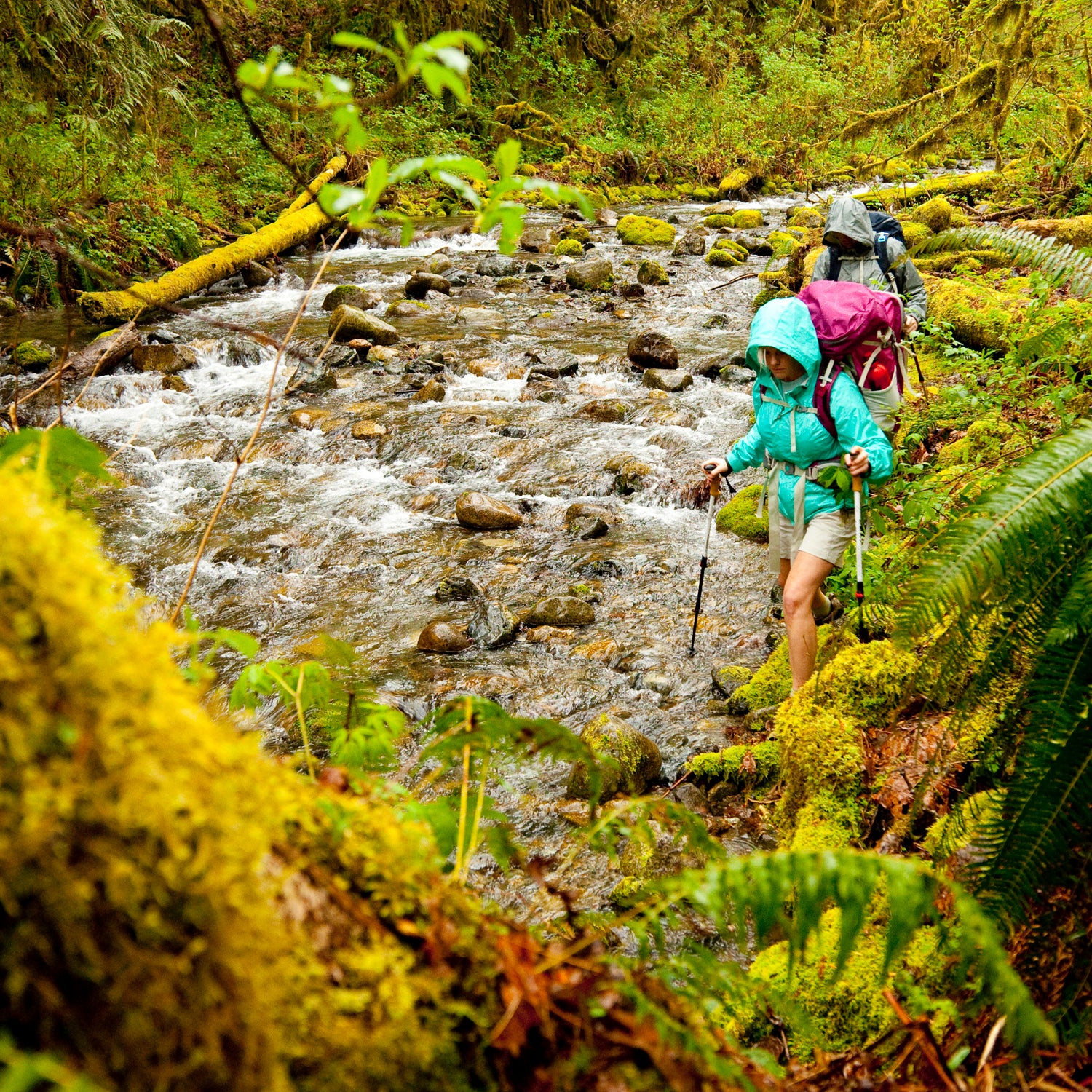You don’t hike in spring without a rain jacket in your pack. But with so many options, it’s hard to know which one to buy. So we put together this quick-and-dirty guide—organized by jacket weights—to walk you through spring shell shopping.
Lightweight Jackets
Pros: The best jackets in the category weigh only a few ounces and will disappear in your pack. They also compress to about the size of a tangerine. Their breathability makes them ideal for high-output activities like running and biking in the cold.
Cons: Many rain jackets in this category are water-resistant, not waterproof, so you’ll get wet in a downpour. And it’ll be pricey if the jacket is both super light and fully waterproof and breathable. Lightweight jackets also tend to eschew nice features like pockets and pit zips.
Buying Advice: If you want to move fast and light (think long thru-hikes) or you live in a relatively dry region like the Southwest, you can get away with this kind of airy shell.
WE LIKE:
Patagonia Houdini ($100): weighs just 3.6 ounces and costs just $100, but it’ll keep you dry in light rain (it’s water-resistant, not waterproof), add warmth on a windy ridge, and dump heat nicely when you’re moving up the trail.
Mountain Hardwear Supercharger ($225): The costs twice as much as the Houdini because it’s fully waterproof with seam tape and a 2.5-layer waterproof-breathable face fabric. It’s heavier, at 6.1 ounces, but it’ll give you a fair bit more protection in the wet and the cold.
Midweight Jackets
Pros: For casual weekend warriors. These jackets are usually waterproof, breathable, and less costly than their super-svelte relatives. They also have more features, like extra pockets and pit zips.
Cons: Midweight jackets are heavier and don’t pack down as well as lightweight shells. They’re also not breathable enough for aerobic activities like trail running.
Buying Advice: If you’re day hiking or heading out for a short weekend backpacking trip, this is the type of jacket you want.
WE LIKE:
Columbia’s Evapouration ($129): There are a lot of rain shells near this price point, but we’ve tested extensively and love how it keeps us dry in a downpour yet dumps heat on the trail. It earns bonus points for the giant selection of colors.
REI Talusphere ($149): We’d pay a bit more for this 19-ounce, because it’s built from a 2.5-layer stretch polyester fabric that’s great for mobility. It also has pit zips, massive chest pockets that sit above a hipbelt, and a pocket big enough for an iPhone.
3-Layer Jackets
Pros: The most protection you can get for the money. Jackets in this category are made to last multiple seasons even with lots of hard abuse. Drag them across rocks or through the trees, and they’ll hold up just fine. They’ll also keep you bone-dry.
Cons: Expect to pay a premium. Most jackets in the category breathe well enough but are too heavy for high-output activities in everything except the coldest weather.
Buying Advice: If you plan to climb a bunch of Colorado’s 14ers this summer, invest in a three-layer shell. This kind of jacket is great for scrambling up rocks. It’ll also shrug off snow just as well as rain (many of these jackets can pull double-duty as ski shells in the winter) and add lots of warmth when temps drop.
WE LIKE:
Arc’teryx Beta AR Jacket ($549): weighs a hair over a pound, but it’s built from bombproof Gore-Tex Pro (the stuff many high-end ski jackets are made from). Like all Arc’teryx jackets, the Beta is packed with nice features, like a helmet-compatible hood (for technical routes), and has a roomy fit to facilitate lots of layering.
Outdoor Research Realm Jacket ($280): uses waterproof, breathable and air permeable AscentShell stretch fabric instead of Gore-Tex so it's less expensive than the Beta, but still plenty durable. We also like that it's slightly stretchy and packs down to the size of a grapefruit.


